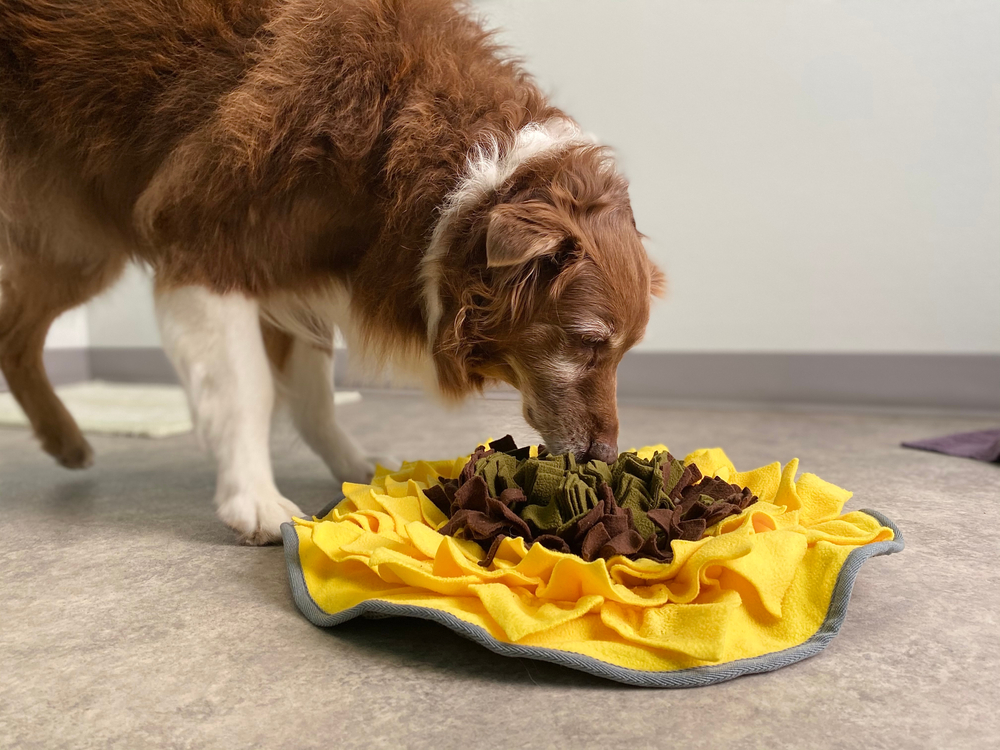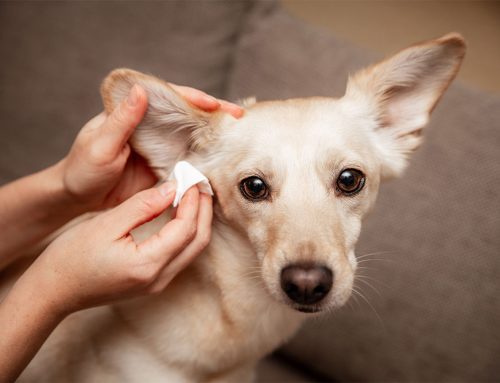Mental stimulation is critical for your pet’s health and happiness. Enrichment activities allow your pet to practice their natural behaviors and keep them mentally engaged. The south Austin veterinarians at Oliver Animal Hospital know that store-bought enrichment pet toys can be expensive, so we suggest toys for your four-legged friend that you can make.
Pet enrichment importance
Mental enrichment is as important to your pet’s health and wellbeing as regular wellness visits and feeding them an appropriate diet. When your pet is not appropriately stimulated, you and your pet may encounter problems that include:
- Behavioral issues — Many pets who are not appropriately mentally stimulated become bored and exhibit behavioral issues, such as eliminating outside the litter box, destructive digging, chewing, or scratching, and aggression.
- Stress — Boredom can also lead to stress, and stressed pets may develop issues such as separation anxiety or stress-related overgrooming.
- Health problems — The stress caused by inappropriate enrichment can also lead to dermatological conditions and idiopathic cystitis.
- Obesity — Mental enrichment can prevent overeating and encourage your pet to move more, which helps prevent obesity and the many issues that result.
Make your own pet food puzzle toy
In the wild, animals use their mental and physical wiles to find a meal—a bowl of food placed in front of their nose won’t stimulate your four-legged friend. A home-made food puzzle toy can ensure your pet expends mental and physical energy to access their food. Ideas include:
- Cardboard tube treat dispenser — When you finish a toilet paper or paper towel roll, repurpose the cardboard tube as a pet treat dispenser. Place kibble inside the tube and fold down the edges so your pet must work to find the goodies.
- Reach feeder — Cut holes in the top of a shoebox and place kibble or treats inside. Let your cat use their paw to retrieve the food. Dogs may also enjoy this food puzzle toy as they manipulate the box until the treats fall out.
- Plastic bottle treat toy — Cut holes in an empty plastic bottle and place kibble or treats inside. Start with large holes until your pet understands the game, and then give them another bottle with smaller holes that make the game more difficult. Ensure the holes are large enough that the food pieces won’t get stuck.
- Muffin tin puzzle — Place treats or kibble in only a few muffin tin cups and cover all spots with tennis balls. Let your pet remove the balls to find the treasure.
- Frozen treats — Freeze goodies, such as chicken broth, tuna juice, canned pumpkin, and mashed banana, in an ice cube tray. Offer your pet a frozen treat they have to lick and chew to enjoy.
- Snuffle mat — Fold treats or kibble inside a large towel that your pet has to undo to find their meal.
Make your own scent-based pet toy
Pets enjoy playing games that use their excellent sense of smell. The American Kennel Club Scent Work sport teaches dogs to search for cotton swabs saturated with essential oils, such as birch, anise, clove, and cypress, but you can exercise your pet’s nose without formal competitions. Ideas include:
- Cup game — Overturn two or three plastic cups, baiting only one cup and seeing if your pet can find the treats. First, let your pet watch as you bait the cup, allowing them to overturn the cup, and find the treat. Once they understand, make the game more difficult by baiting a cup and moving the cups around.
- Treasure hunt — Hide smelly treats or scented toys, such as with catnip, around your home, and let your pet hunt for the treasure.
- Box search — Place several cardboard boxes of different sizes and shapes around your home, bait some boxes, and let your pet sniff and find the baited boxes. Leave the baited boxes open to start with and then close them to increase the challenge.
Make your own dig-based pet toy
Digging is a natural dog behavior, and providing an appropriate digging space can preserve your flower beds. Ideas include:
- Natural dig pit — Fill a kiddie pool with sand or dirt and hide toys so your dog has to dig to find them. Initially, you may have to encourage your dog to dig by showing them how it’s done.
- Indoor dig pit — For a cleaner, indoor dig pit, fill a kiddie pool or large box with scrunched up newspaper, small cardboard boxes, towels, and plastic containers. Hide treats and toys throughout, and let your pet dig to find the treasures.
Make your own interactive pet toy

Pets especially enjoy interactive games because they can spend time with you. Ideas include:
- Pet teaser — Tie a stuffed pet toy or rattle mouse to a pole with a long string. Move the toy back and forth, up and down, and all around to entice your pet to run and jump.
- Hide and seek — In this game, you are the toy. You put smelly treats in your pockets and find a hiding place while someone holds your pet. When you are ready, yell, “Come find me!” Praise your pet and give them a tasty treat when they find you.
If you would like more enrichment ideas for your pet, or you are concerned they are exhibiting stress-related behaviors, contact the south Austin veterinarians at Oliver Animal Hospital.








Leave A Comment